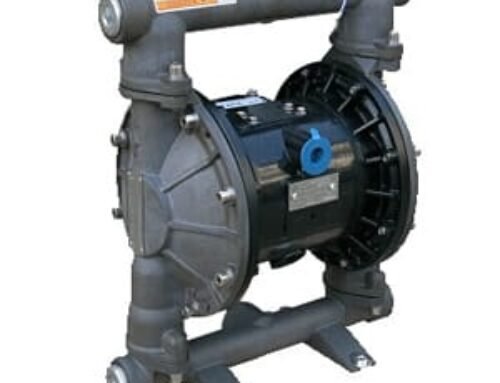How long will a diaphragm pump last? A diaphragm pump is built for endurance. Its design allows it to operate reliably even in harsh industrial conditions. When properly maintained, a high-quality diaphragm pump can last 5 to 10 years or more. Thus, it is one of the most durable positive displacement pumps in its class.
Durability and Service Life
The durability of a diaphragm pump depends on three key factors: material selection, operating conditions, and duty cycle.
Material compatibility is the first determinant of lifespan. Diaphragms made from PTFE, PVDF, EPDM, or SS316 stainless steel resist corrosion, abrasion, and chemical attack. Choosing the right material ensures the diaphragm retains flexibility and sealing strength over thousands of pumping cycles. In environments that involve strong acids or solvents, this compatibility is critical for preventing premature wear.
Operating conditions also play a major role. Diaphragm pumps perform best when operated within their rated pressure, temperature, and flow capacity. Overpressuring or running the pump with incompatible fluids can stress the diaphragm and reduce service life. Conversely, stable operating conditions can extend a diaphragm’s life well beyond its standard replacement interval.
How long and how often the pump runs affects its mechanical longevity. Pumps that operate continuously at moderate speeds last longer than those that frequently start, stop, or run at maximum stroke frequency. WRS Dosing’s motor-driven models are engineered to handle sustained operation with minimal vibration and low mechanical fatigue, which further improves service life.
Maintenance Frequency and Ease
Maintenance of diaphragm pumps is relatively simple and infrequent compared to other pump types. Routine visual checks every three to six months help detect early signs of wear or leakage.
The diaphragm itself generally requires replacement every one to two years, depending on fluid type and operating pressure. In heavy-duty chemical service, replacement may be needed every six to twelve months.
The valves and seats typically need cleaning or replacement every 12 to 24 months, depending on the cleanliness and viscosity of the pumped fluid. Fortunately, WRS Dosing designs its pumps with modular assemblies, allowing quick diaphragm and valve changes without special tools. This reduces downtime and ensures consistent performance.
After-Sales Support from WRS Dosing
A major strength of WRS Dosing lies in its comprehensive after-sales service. The company provides full technical consultation to help clients select the correct pump materials and capacity for their specific application.
Genuine spare parts—diaphragms, valve sets, and seal kits—are always available, ensuring that replacements can be made immediately when needed.
WRS also offers installation and commissioning assistance, both on-site and remotely, to ensure proper setup, priming, and calibration. For long-term reliability, customers can opt for maintenance contracts that include scheduled servicing and periodic performance checks.
All WRS diaphragm pumps come with a manufacturer’s warranty covering defects in materials or workmanship, reinforcing confidence in every unit sold.
So, how long will a diaphragm pump last? With proper material selection, correct operation, and scheduled maintenance, a diaphragm pump from WRS Dosing can operate efficiently for up to a decade or longer. Its simple structure, chemical resistance, and minimal service needs make it an ideal choice for industries that demand reliability and precision.






Leave A Comment